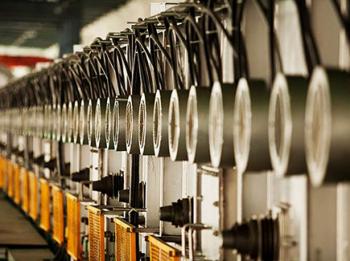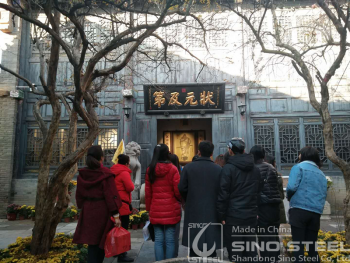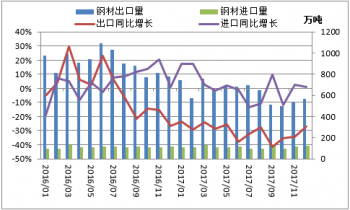Overcapacity campaign faces its toughest challenge this year
2018-03-22
China's effort to cut overcapacity in steel and coal is expected to face its most difficult challenge this year, although the target may look small compared with the previous two years, analysts said.
The newly announced Chinese government report said that in 2018, China plans to cut steel production capacity by around 30 million metric tons, and coal production capacity by approximately 150 million tons.
In 2017, the plan was to reduce steel production capacity by around 50 million tons and to shut down at least 150 million tons of coal production facilities. In 2016, the target was about 45 million tons of steel capacity and 250 million tons of coal capacity.
"The goal seems smaller compared with last year, but it is well considered," said Wu Lixin, deputy director of the strategic planning research department at the China Coal Research Institute.
"In the past, (the reduction mostly involved) slashing outdated capacity and closing down 'zombie enterprises', but now, it is to tackle inefficient capacity. This last bit of the work is most difficult, because it targets operating and perhaps profit-making enterprises."
Capacity reduction in the coal and steel sectors has seen significant progress since the central authorities officially initiated the supply-side structural reform in late 2015 based on five priority tasks, including cutting overcapacity, to improve the composition of supply.
In 2017 and 2016, the country removed 120 million tons of steel production capacity, and 800 million tons of coal mining capacity, going far beyond annual goals, and almost exceeding the overall goals of the 13th Five-Year Plan (2016-20).
According to Wu, among the coal capacity slashed in 2016 and 2017, nearly two thirds was from zombie enterprises. But for this year, zombie enterprises' capacity will take up only 30 to 40 percent at best, and the rest would be from substandard or illegal coal mines, and legal but inefficient coal mines.
Xu Xiangchun, chief analyst with iron and steel industry consultancy website Mysteel.com, shared similar sentiments regarding capacity reduction in the steel sector.
Due to laws and regulations, and the compensations given to outdated capacity, it is relatively easy to shut down zombie enterprises, or operations that are illegal or substandard, but it is difficult to close down undesirable inefficient capacity, especially as prices of coal and steel have risen, Xu said.
In such a situation, a combination of market-oriented and administrative approaches is sensible for further capacity reduction, the experts said.
Apart from compensation and incentives for replacing outdated capacity with clean and effective capacity, the authorities should adopt more proactive policies to help axed capacity make arrangements for staff deployment, assets and properties transactions, and debt handling, according to Wu Lixin, deputy director of the strategic planning research department at the China Coal Research Institute.
Xu said mergers and acquisitions, either driven by market forces or the authorities, should rise in importance for further capacity elimination. M&A would also help increase industrial concentration and bring down leverage of enterprises, making it an especially good method for the industry's structural adjustment and capacity reduction, he added.
Lin Boqiang, director of the China Center for Energy Economic Research at Xiamen University, commented that the achievement in capacity reduction in the past has brought about balanced supply and demand and improved industry profit rate, thereby providing a favorable industry environment for further capacity reduction.
Previous Page:USD vs RMB exchange rate
Next Page:Steel prices on rise before tariff talks
CONTACT US
We're always working to expand the boundaries of what's possible. Stay up-to-date with the latest news, announcements and stories from SINO STEEL.
PRODUCT INQUIRY
Give us a few details about yourself and the demand requirements of products, we will reply you as soon as possible.










